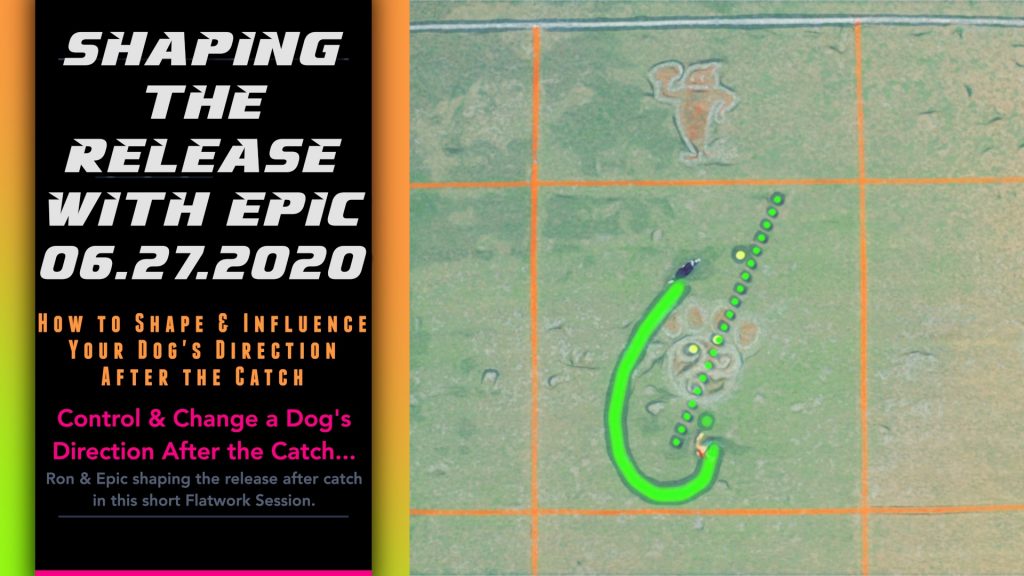
Epic Team Movement | How to Shape and Control Your Dog’s Movement After Catch
This piece is building off of the Stop Putting the Cart Before the Horse piece from a few days ago.
We call the dog’s movement after a catch the Release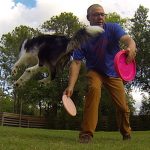 Release has many meanings in disc. Throws and throw variations can be referred to as releases. Sometimes you talk about the dog releasing something, the toy, or the environment, as in to stop... More. As in, “the dog releases clockwise”, or “the dog releases to the handler”. Your dog has natural releases, conditioned releases, patterned releases, and situational releases that all influence team movement. And it is not at all clear which one is which. It’s a good idea to be present and aware before and after the catch and to understand your dog’s movements after the catch.
Release has many meanings in disc. Throws and throw variations can be referred to as releases. Sometimes you talk about the dog releasing something, the toy, or the environment, as in to stop... More. As in, “the dog releases clockwise”, or “the dog releases to the handler”. Your dog has natural releases, conditioned releases, patterned releases, and situational releases that all influence team movement. And it is not at all clear which one is which. It’s a good idea to be present and aware before and after the catch and to understand your dog’s movements after the catch.
Directional Preference With the Balanced Dog
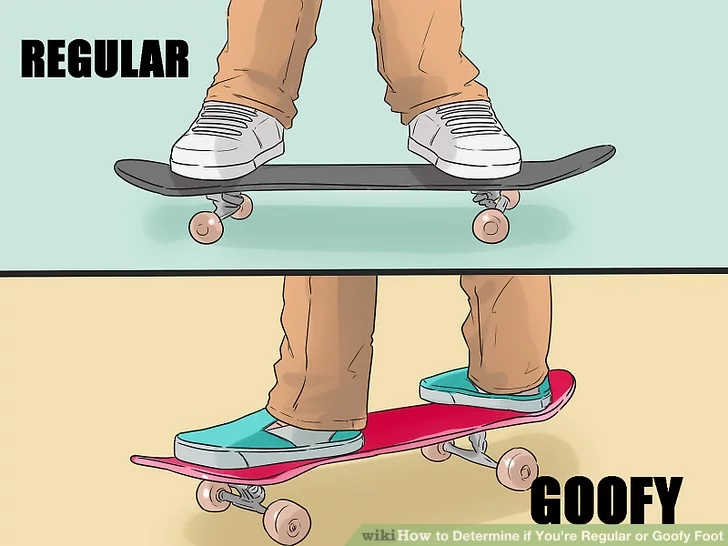
In accordance with the 13 Laws of Flatwork, dogs have a preference in direction, clock or counter. Each direction requires a different lead foot, clock is a right footed lead, counter is a left footed lead. This is similar to board sports with the front footed preference: regular (left foot forward) and goofy foot (right foot forward) and to a lesser extent, right and left handedness.
Epic is pretty well balanced, a fairly uncommon trait in dogs, but he does have a slight counter clock preference. Balanced dogs are extremely flexible in how they move which is wonderful but they can be very hard to handle. The easy flexibility of a balanced dog can be easily interpreted as unpredictability. They are not actually the same thing yet often feel like it.
 Front is a stable position directly in front of the handler. Front is an traditional obedience skill. Usually your dog sits in this position, but standing is often acceptable as well, especially in... More & Rear Cross
Front is a stable position directly in front of the handler. Front is an traditional obedience skill. Usually your dog sits in this position, but standing is often acceptable as well, especially in... More & Rear Cross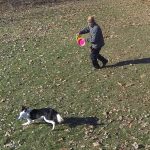 On a Rear Cross, the dog switches Flanks with the behind her. From clock to counter clockwise Flank or vice versa. Taken directly from the canine agility world, the Rear Cross is a... More) | 1:27 – 1:38 – Failure of Conditioned Response | 1:40 – 2:58 – Handler Movement Effect
On a Rear Cross, the dog switches Flanks with the behind her. From clock to counter clockwise Flank or vice versa. Taken directly from the canine agility world, the Rear Cross is a... More) | 1:27 – 1:38 – Failure of Conditioned Response | 1:40 – 2:58 – Handler Movement EffectThrow Placement, Pace, & Flight
Watch closely and you should see that the placement and pace of the disc is made to reinforce the release. When keeping the dog on flank (same color after catch) the disc is placed inside the dog’s line, closer to the handler. When prompting the peel off into the other direction, the disc is placed outside the dog’s line or further from the handler. The distance off line can be as little as 1/2 a yard, just enough to turn the dog’s head on the catch.
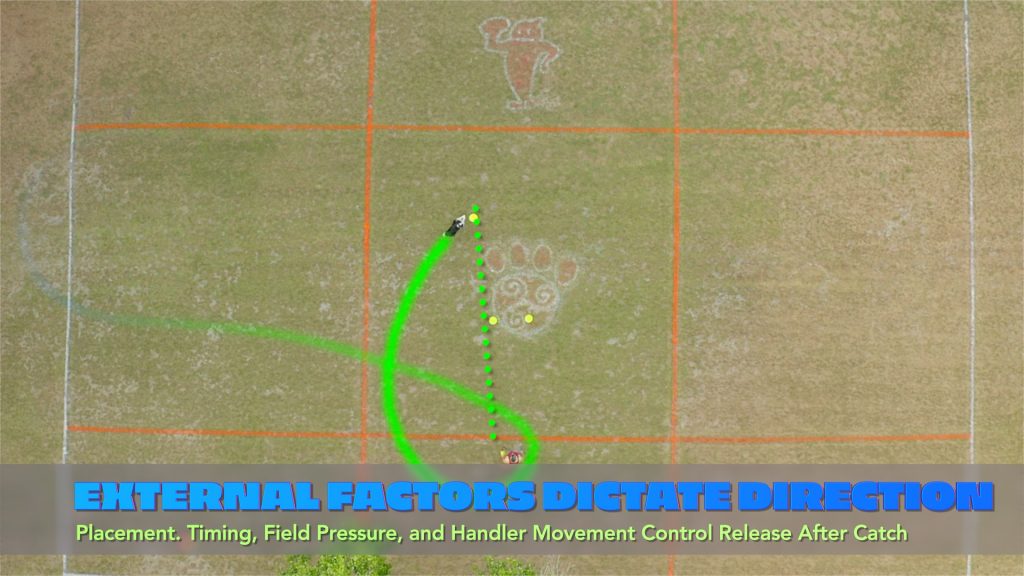
Pace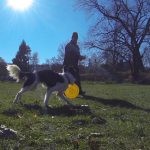 When working the flank, a dog often goes from running very hard to a more easy going pace. She adjusts her pace to match you or to read the situation. We call this... More of the throw, how fast it is going when it gets to the dog’s line is also a factor in reinforcing the intended release. Most of the releases to the other direction are moving fast at the dog’s line and would move past it if there were no catch.
When working the flank, a dog often goes from running very hard to a more easy going pace. She adjusts her pace to match you or to read the situation. We call this... More of the throw, how fast it is going when it gets to the dog’s line is also a factor in reinforcing the intended release. Most of the releases to the other direction are moving fast at the dog’s line and would move past it if there were no catch.
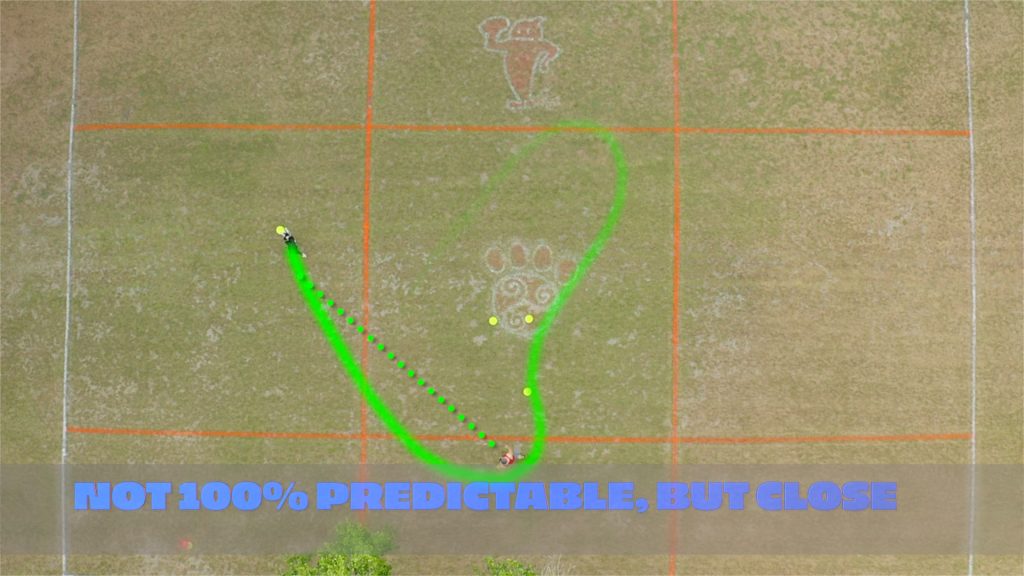
Backhand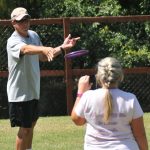 The Backhand toss is the traditional disc throw. While it might not be the easiest throw of them all, it is the easiest to throw a hundred yards, and it is the easiest... More throws that hyzer out promote a counter clock release, backhands that turn over promote a clockwise release. I worked pretty hard to ensure that the appropriate disc mechanics were in place to make the correct directional choice much easier for Epic, the balanced dog.
The Backhand toss is the traditional disc throw. While it might not be the easiest throw of them all, it is the easiest to throw a hundred yards, and it is the easiest... More throws that hyzer out promote a counter clock release, backhands that turn over promote a clockwise release. I worked pretty hard to ensure that the appropriate disc mechanics were in place to make the correct directional choice much easier for Epic, the balanced dog.

Conditioned Response: Using the Front & Rear Cross | 1:00 – 1:40
You should be able to see a quick release by Epic after the catches with the Crosses called (Here = Front Cross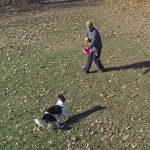 On a Front Cross, your dog switches Flanks in with you in front of them. From Clock to Counter Clockwise Flank or vice versa. Taken directly from the canine agility world, the Front... More – towards the handler | Squib = Rear Cross
On a Front Cross, your dog switches Flanks in with you in front of them. From Clock to Counter Clockwise Flank or vice versa. Taken directly from the canine agility world, the Front... More – towards the handler | Squib = Rear Cross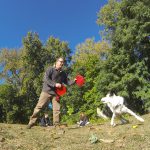 A Cross is an canine agility term that describes a change of working sides. Your dog moves from your left to your right (Heel to Side) or from Clock to Counter. Crosses are... More – Away from the Handler).
A Cross is an canine agility term that describes a change of working sides. Your dog moves from your left to your right (Heel to Side) or from Clock to Counter. Crosses are... More – Away from the Handler).
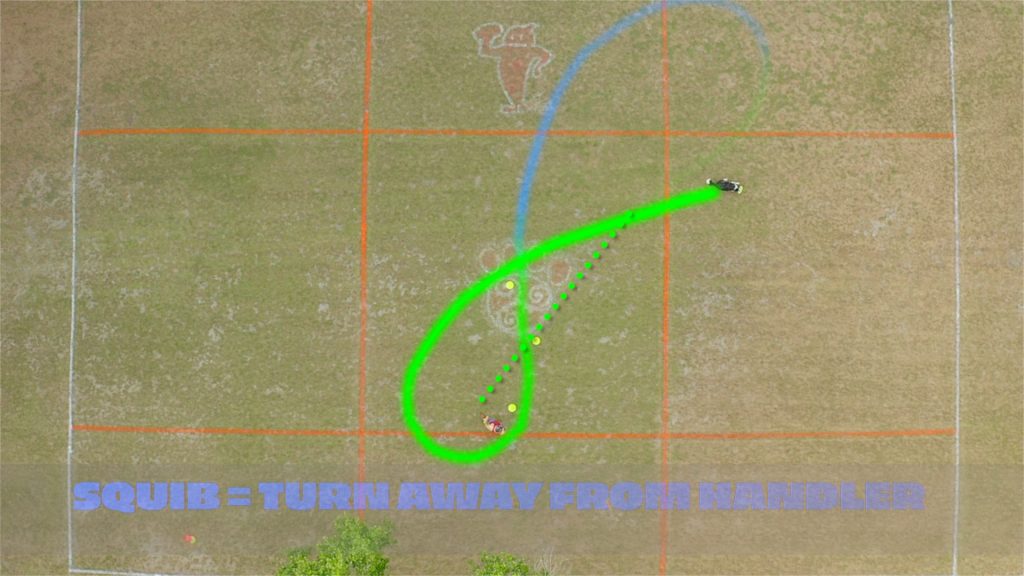
I am still trying my best to present the appropriate disc placement & flight properties that will reinforce the desired release because the conditioned response can be overwhelmed by the primary reinforcers, like all conditioned responses in behavior.
Having a great reward history and conceptual understanding of the Front and Rear Cross can be very helpful with team movement, disc management, & routine building.
Handler Movement & Positional Pressure | 1:40 – 3:00
The dog wants to get back to the handler, the flatwork savvy dog wants to get back on flank, and the balanced dog will go either way. Put these three Facts of Dog together and your movement becomes a powerful tool to shape & control the release of the balanced dog after catch.
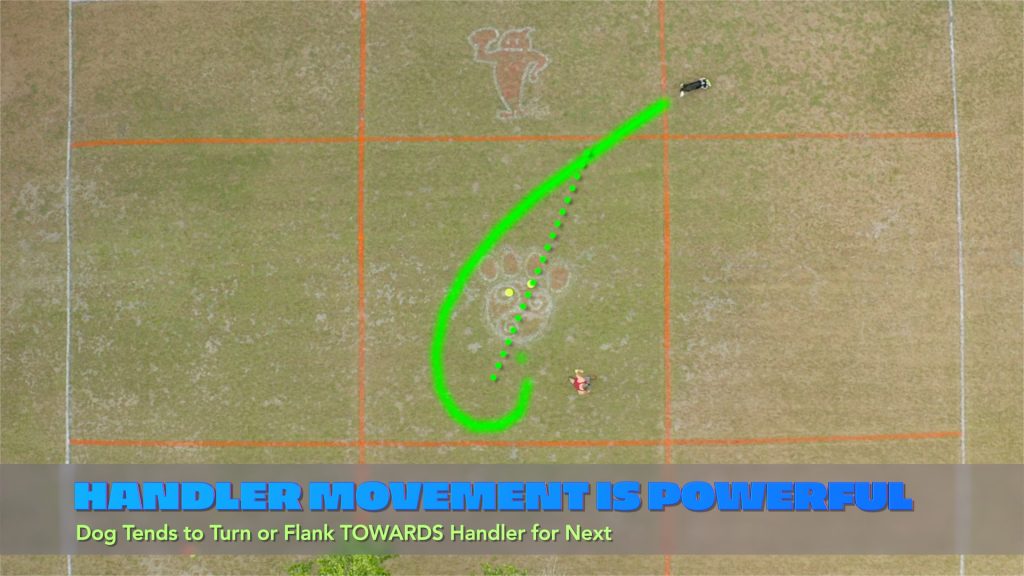
Simply turn and move in the direction that puts you on the side of the dog your desired direction requires. You are essentially putting yourself on the dog’s flank and asking the dog to recognize the positional relationship and lock into that position.
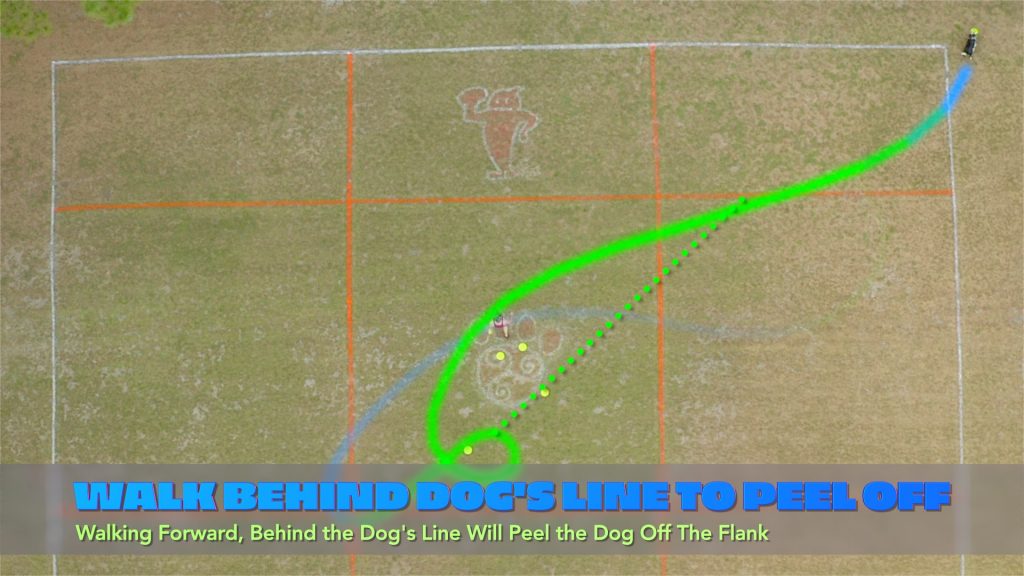
Dogs that have solid flatwork should do this extremely well. Dogs that do not have flatwork experience should notice that the handler is moving and that getting to the handler efficiently is done by moving in that direction.
That’s Fine, But It’s Just a Border Collie
This is not just a border collie thing. I know I’m running Epic, who is a Baussie, and who runs round patterns, but we have created and shaped these patterns through our play and through techniques such as these.
Round patterns are not a given with a border collie. Round patterns are a given with dogs who stalk the target. Any dog will stalk a target if a target is not thrown.
Dogs chase the target in straight lines. Straight lines are about striking. If you throw targets that challenge the dog, or chuck a target to get the dog to chase it, that will lead to a straight line. Do that repeatedly and the round stuff drops out of the game.
I do this same work with Malinois, labs, pit bulls, cattle dogs, and even poodles. These movements and these rules are how dogs, handlers, and targets work as a team.
Why Not Throw Directly Out Front?
These techniques do work with catches at 12 o clock. They might even work better out there at 12 o clock, as there is no directional or angular momentum to work against (the dog doesn’t have to pull off of clock, or continue on in any direction).
I don’t throw to 12 o clock very often as that direction only allows the dog to simply turn around and run back at me – straight back at me. I don’t like that type of movement. I don’t care to be bum-rushed or plowed into.
I don’t like the dog to leave me for the target as if I’m not even there, and I don’t like the dog to come crashing back into me. There is not a lot of team movement in there and moving the dog in flow is not really an option.
Throwing laterally creates interesting lines, enhances flow, team movement, and control, and presents the handler as the dog’s team mate. I like that kind of game.
What’s Next?
I’ve got a couple more pieces in this series to come. One with Loot, a very unbalanced dog, and another with Eppie. Both of these pieces feature some disc management and team movement applications of these ideas.




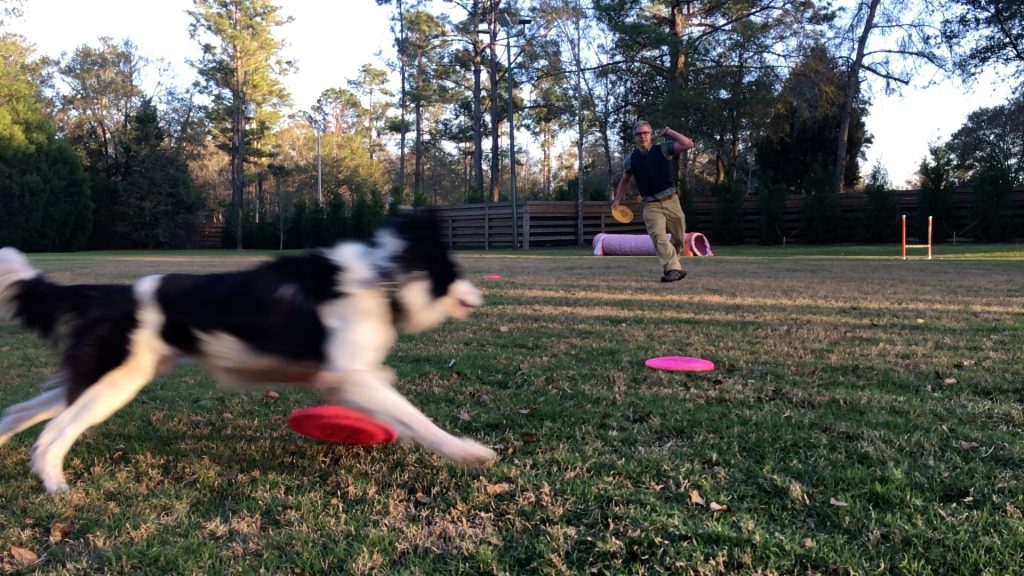

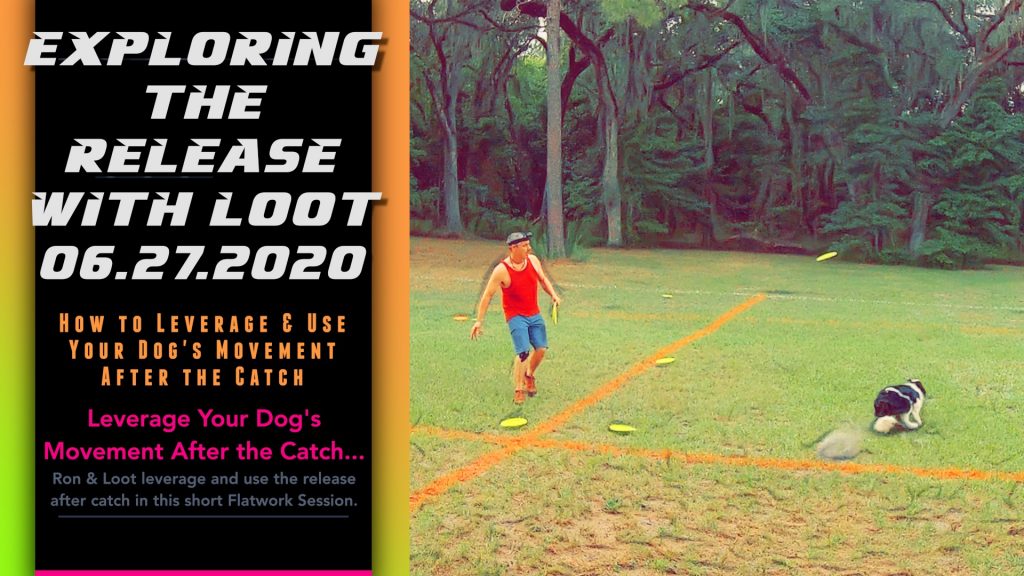
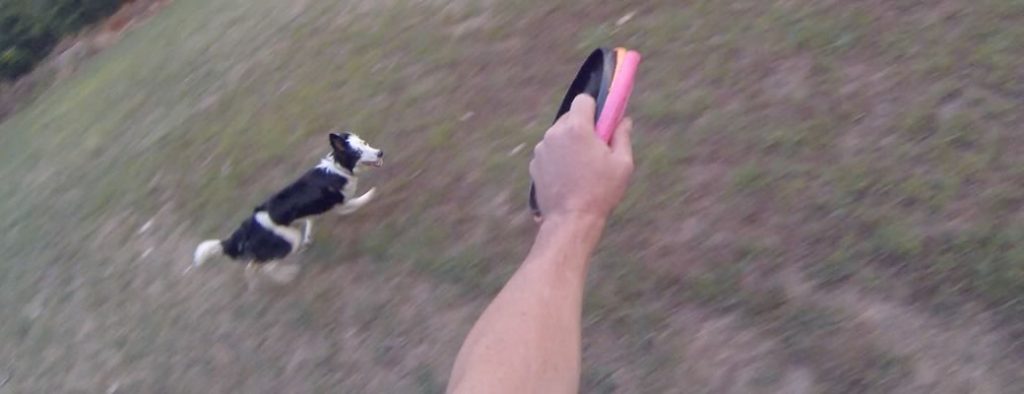
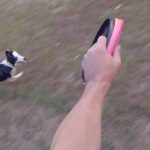
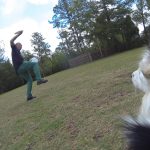
Responses